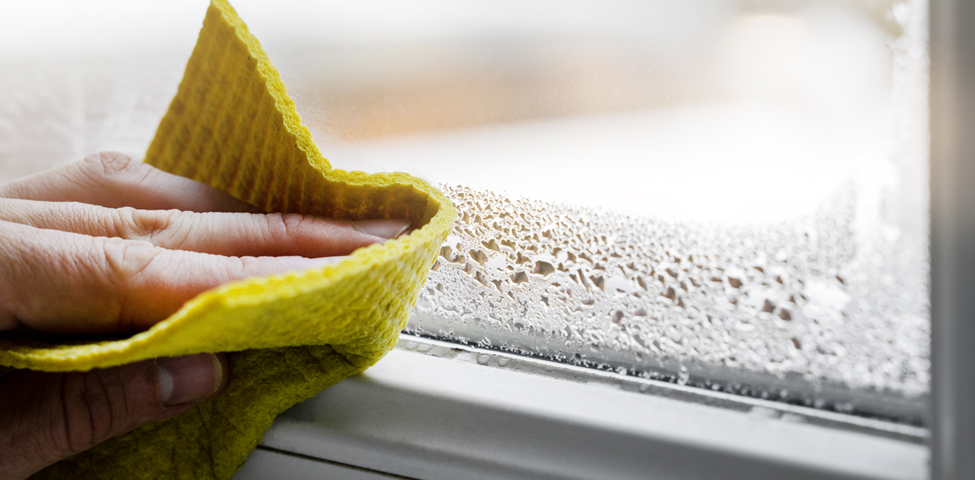At WH, we are committed to supporting you to live well at home. We have a team of Healthy Homes Advisors who are on hand to help, especially with any damp, mould, and condensation queries. We understand with the colder weather and rising cost of living, it can be difficult to keep a healthy home. Our Healthy Homes team are here to help you, as well as further support available from our Money Smart and Energy Wise teams.
Our Healthy Homes Advisors are out and about daily supporting customers to live well at home. To help you prevent condensation, they have answered your most frequently asked questions below. Check them out for top tips.
What causes mould in my home?
Damp and mould are often caused by condensation, which happens when warm moist air meets a cold surface like a wall or window. Activities such as cooking, washing, showering, drying clothes indoors, and boiling kettles contribute to moisture in the air, adding to condensation and therefore mould in the home. Condensation and mould are common in the home, it is how you deal with it that helps prevent it growing.
How can I prevent condensation in my home?
You can reduce moisture by covering pans while cooking, drying clothes outdoors or in well-ventilated areas, venting your dryer outside, wiping down windowsills to remove excess moisture, and having shorter showers with the bathroom door closed. Proper ventilation is crucial: use extractor fans, keep small windows ajar, leave trickle vents open, and open kitchen and bathroom windows for at least 20 minutes after activities that create steam. You should try to encourage ventilation around large pieces of furniture such as sofas and wardrobes, by leaving two inches between furniture and the wall. You should also try not to overload wardrobes and cupboards to allow air circulation.
Does heating my home help with preventing condensation?
Maintaining a consistent temperature between 18 and 21 degrees celsius throughout your home will help to prevent condensation. It is important that you heat your entire home, so we recommend using thermostatic radiator valves to gently heat unused rooms. We understand that heating costs can be a concern, if you need support, please contact our Money Smart team. They can help you with budgeting, getting the best deals and money support in general.
I have black mould in my home, how can I deal with it?
Remove excess mould with a damp cloth, avoiding brushing to prevent spores from spreading. Wipe affected areas with a fungicidal spray or mould killer. Alternatively, use a solution of Tea Tree oil diluted in water. After treatment, redecorate using fungicidal paint or wallpaper paste, dry-clean affected clothes, and shampoo carpets.
What should I do if I have followed prevention advice but still have mould in my home?
We are here to support you. Please report it to us, providing as much information as possible, including photos or videos of the affected areas. One of our inspectors will then help you and plan in any work that is needed to help prevent damp and mould in the future.
We hope you have found these top tips useful in preventing condensation, and therefore mould in your home. If you need support, please reach out to us and we will be happy to help.

